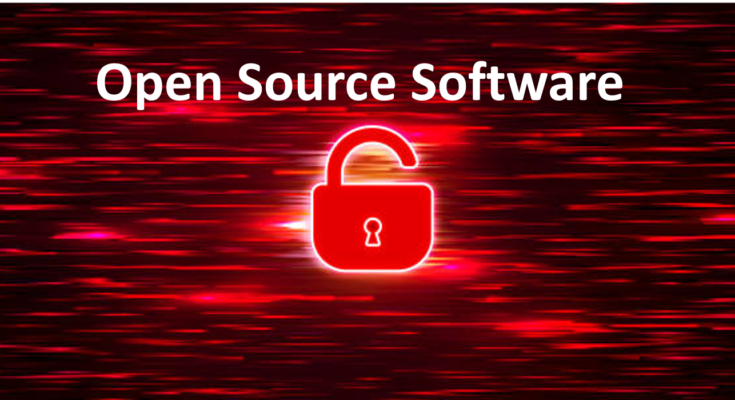In our ever-connected digital world, open-source software has become a driving force behind technological innovation. It’s the backbone of countless applications, systems, and platforms that we use daily. But what about its impact on cybersecurity? Is open-source software a friend or a foe for securing our digital lives? This article explores open source programs’ fascinating world and their relationship with cybersecurity. We’ll dive into the concerns surrounding them and help you understand what this means for your online safety. Whether you’re a tech enthusiast or a casual internet user, read on to unravel the mysteries of open source and its cybersecurity implications.
What is Open Source Software?
Open source software (OSS) is software whose source code is made available to the public. Anyone can view, use, modify, and distribute the code. It’s a collaborative approach to software development, where a global community of volunteers and professionals work together to create and maintain software.
Open source code is usually stored in a public repository and shared publicly. Anyone can access the repository to use the code independently or contribute improvements to the design and functionality of the overall project.
Why Open Source Model?
The open source model is rooted in transparency, collaboration, and cost-efficiency. It allows for rapid development, peer review, and widespread adoption. Many popular applications, like the Linux operating system, the Firefox web browser, and the Apache web server, are open source.
How does Open Source Software Work?
Open source software is typically stored in a public repository, where it’s openly shared for anyone to access. This accessibility allows both independent use of the code and collaborative contributions to enhance the software’s design and functionality. Importantly, open source software comes with distribution licenses that define how developers can use, study, modify, and distribute the software. Some of the most popular licenses include the MIT License, GNU General Public License (GPL) 2.0, Apache License 2.0, GNU General Public License (GPL) 3.0, and the BSD License 2.0, which varies in terms of restrictiveness. When modifying the source code, open source software must include details of what was changed and the methods involved, and depending on the license terms, the resulting software may or may not need to be made available for free.
The Concerns Surrounding Open Source and Cybersecurity
While open source software offers numerous benefits, it’s not without its challenges, especially when it comes to cybersecurity. Here are some key concerns:
1. Lack of Control
With open source software, you’re not relying on a single company for support and updates. While this can be an advantage in terms of independence, it also means you have less control over the development process and the security measures in place.
2. Limited Accountability
When issues arise in open source projects, it can be challenging to assign responsibility. There’s no single entity to hold accountable, and fixing security vulnerabilities may not be as streamlined as with proprietary software.
3. Security Vulnerabilities
Open source software isn’t immune to security vulnerabilities. While the open development model allows for peer review, it also means potential threats may be exposed before they are fixed. This can be a concern for those who require immediate, robust security.
4. Dependency Risks
Many applications and systems rely on open source components. If one of these components has a security flaw, it can put an entire ecosystem at risk. Ensuring that all dependencies are up-to-date and secure is a complex challenge.
Mitigating Open Source Cybersecurity Concerns
Understanding these concerns is just the beginning. There are strategies to mitigate the cybersecurity risks associated with open source software.
1. Thorough Evaluation
Before adopting open source software, conduct a thorough evaluation. Assess its security features, the development community’s responsiveness to vulnerabilities, and the project’s overall health.
2. Continuous Monitoring
Regularly monitor your open source dependencies for security updates and patches. Automated tools can help with this process to ensure that your software remains secure.
3. Secure Development Practices
If you’re involved in open source development, adhere to secure coding practices. Emphasize security from the project’s inception and use security tools and best practices.
4. Collaboration with the Community
Engage with the open source community. Report vulnerabilities, contribute to fixes, and participate in discussions. Collaboration is at the heart of open source success.
The Future of Open Source and Cybersecurity
As technology evolves, open source software will remain critical to our digital infrastructure. The concerns around security will continue to be addressed through collective effort and innovation.
Advancements in Security
The open source community is dedicated to improving security. As more developers focus on securing open source projects, we can expect to see advancements in this area.
Integration of Automation
Automation tools for identifying and patching vulnerabilities are becoming more sophisticated. These tools will play a significant role in enhancing the security of open source software.
Collaborative Security Initiatives
Open source projects often join forces with industry-specific security initiatives. These collaborations enhance the security of open source software and help in building trust with users.
Closing Thoughts: Embracing Open Source Securely
Open source software has reshaped the digital landscape and continues to drive innovation. While it does come with its share of cybersecurity concerns, these issues are not insurmountable. By following best practices, staying vigilant, and actively engaging with the open source community, you can harness the benefits of open source while keeping your digital world safe.
As we move into a future where open source and cybersecurity become even more intertwined, the role of open source will likely become even more crucial. It will remain a cornerstone of technological development, and its security will continue to be a top priority. Embrace open source securely, and you’ll be at the forefront of the digital revolution, enjoying the best of both worlds – innovation and safety.




